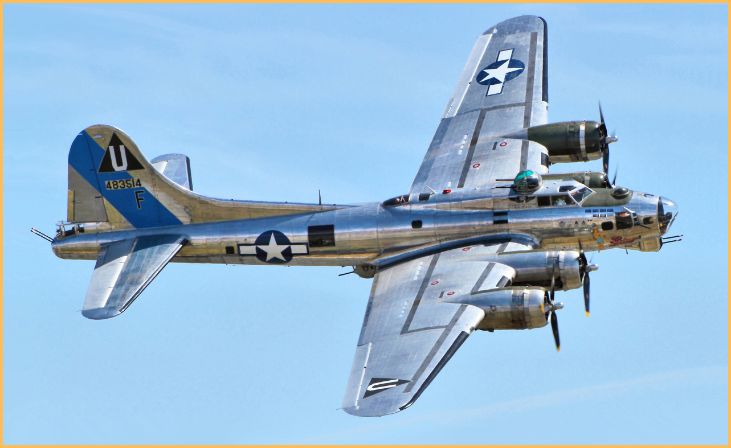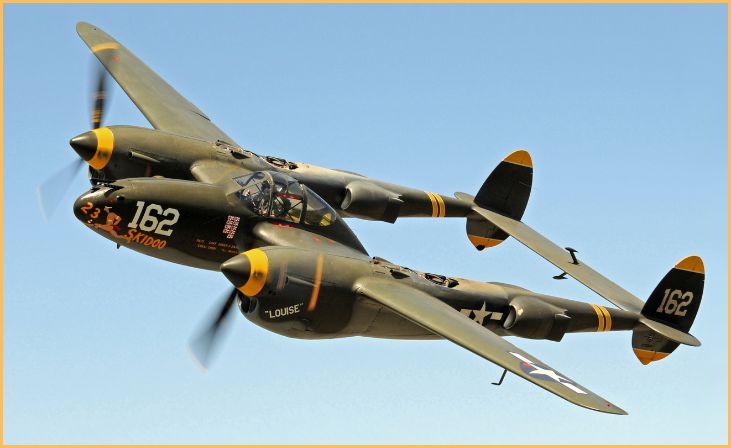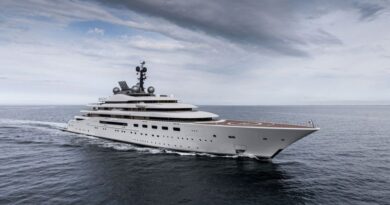Planes America Used to Win WWII – In the crucible of World War II, the skies became a battleground where the fate of nations hung in the balance. American aviation played a pivotal role in the Allied victory, shaping the course of history through technological innovation and strategic prowess.
As the conflict unfolded, a fleet of remarkable aircraft emerged as instrumental tools in securing air superiority and delivering devastating blows to enemy forces. This exploration delves into the iconic planes that defined American air power during World War II, showcasing their evolution, capabilities, and indelible impact on the war’s outcome.
From the relentless B-17 Flying Fortress to the agile P-51 Mustang, these planes exemplify the ingenuity and determination that propelled the United States and its Allies to triumph in the face of global conflict.
Planes America Used to Win WWII
Boeing B-17 Flying Fortress

The Boeing B-17 Flying Fortress, a heavy bomber crucial during World War II, played a pivotal role in the Allied strategic bombing campaign. Renowned for its durability and defensive firepower, the B-17 could carry a substantial bomb load across long distances.
Manned by a crew of ten, it featured multiple machine guns for self-defense, earning its “Flying Fortress” nickname. The aircraft’s participation in daylight bombing raids over Europe contributed significantly to Allied efforts, showcasing its resilience amid enemy fire.
The B-17’s impact extended beyond its strategic capabilities, fostering crew camaraderie and earning its place as an iconic symbol of American air power in the war.
Also, Read – Scents that Attract Roaches Like Magnets
North American P-51 Mustang
The North American P-51 Mustang, a legendary long-range fighter in World War II, played a crucial role in securing air superiority for the Allies. Renowned for its speed, range, and effectiveness in air-to-air combat, the Mustang became a key escort for American bombers. Its Rolls-Royce Merlin engine contributed to outstanding performance at high altitudes.
The P-51’s extended range, when equipped with drop tanks, allowed for deep penetration into enemy territory, significantly impacting strategic operations. With its sleek design and lethal capabilities, the P-51 Mustang is celebrated as one of the most iconic and successful fighter aircraft of its era.
Grumman F6F Hellcat
The Grumman F6F Hellcat, a carrier-based fighter, played a pivotal role in securing Allied air dominance in the Pacific during World War II. Renowned for its rugged design and combat effectiveness, the Hellcat excelled in aerial combat against Japanese adversaries.
With powerful armament and superior performance, it contributed significantly to the success of U.S. Navy air operations, particularly in the crucial battles of the Pacific Theater.
The F6F Hellcat’s durability and adaptability made it a key instrument in overcoming Japanese air power, ultimately ensuring control of the skies and supporting Allied naval and amphibious operations across the vast Pacific Ocean.
Consolidated B-24 Liberator

The Consolidated B-24 Liberator, a heavy bomber, played a vital role in Allied strategic bombing campaigns during World War II. Known for its long range, the B-24 was employed in both the European and Pacific Theaters.
With a larger bomb load capacity than the B-17, it conducted extensive bombing missions against Axis targets, contributing significantly to the overall war effort. The B-24’s adaptability allowed it to serve various roles, from strategic bombing to anti-submarine patrols.
Its widespread use showcased the aircraft’s versatility and endurance, making the B-24 Liberator a key asset in the Allied air forces and a symbol of American industrial aviation during the war.
Douglas C-47 Skytrain (Dakota)
The Douglas C-47 Skytrain, commonly known as the Dakota, was a vital workhorse of Allied transport during World War II. Serving as a versatile cargo and troop transport aircraft, the C-47 played a pivotal role in airborne operations and logistical support.
It was instrumental in the D-Day invasion, dropping paratroopers behind enemy lines and towing gliders filled with troops and supplies. The C-47’s reliability, durability, and adaptability made it an essential component of Allied air forces, facilitating the rapid deployment of personnel and materials across theaters of operation.
The enduring legacy of the C-47 extends beyond the war, as it continued to serve in various roles for decades.
Also, Read – Classic American Cars
Grumman TBF Avenger
The Grumman TBF Avenger, a torpedo bomber, made a significant impact as a key aircraft in the U.S. Navy during World War II. Renowned for its effectiveness in anti-submarine warfare and torpedo attacks, the Avenger played a crucial role in naval battles in the Pacific Theater.
Its robust design and capabilities contributed to the success of major engagements, including the Battle of Midway. The Avenger’s versatility extended to roles such as reconnaissance and ground attack.
With its folding wings for carrier storage and a powerful payload, the TBF Avenger became an indispensable asset, helping secure Allied naval supremacy in the Pacific during the war.
Lockheed P-38 Lightning

The Lockheed P-38 Lightning, a distinctive twin-engine fighter aircraft, played a versatile role in World War II. Renowned for its unique twin-boom design and exceptional performance, the P-38 excelled in various missions, including interception, dive bombing, and reconnaissance.
With its extended range, the Lightning provided crucial long-range escort for bombers in both the European and Pacific Theaters. Known for its speed and firepower, it became one of the war’s most successful and recognizable fighters.
The P-38’s innovative design and adaptability made it a valuable asset in diverse combat scenarios, contributing to the Allied air superiority and strategic successes during the conflict.
Conclusion
In retrospect, the legacy of these aircraft extends far beyond their wartime duties. The triumphs and innovations in World War II laid the foundation for a new era in aviation, influencing post-war developments and shaping the course of military strategy.
The enduring impact of these planes on both technological advancements and historical narratives underscores their crucial role in the Allied victory. As the curtains closed on World War II, the roar of American engines echoed a resounding success, leaving an indelible mark on the skies and the pages of history.
FAQs
The B-17 Flying Fortress played a crucial role in strategic bombing campaigns. Its ability to carry a significant payload over long distances and its robust design made it instrumental in weakening enemy industrial and military targets.
The P-51 Mustang was a key player in establishing air superiority. Its long-range capabilities and effectiveness as a bomber escort contributed significantly to the success of Allied bombing raids, particularly over Europe.
The F6F Hellcat excelled in air-to-air combat, securing naval dominance for the Allies. The SBD Dauntless was a dive-bomber critical in engagements like the Battle of Midway, turning the tide in the Pacific.







